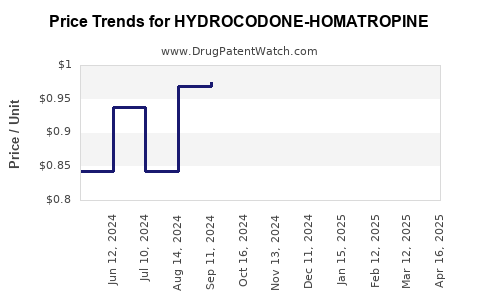Drug Price Trends for HYDROCODONE-HOMATROPINE
✉ Email this page to a colleague

Average Pharmacy Cost for HYDROCODONE-HOMATROPINE
| Drug Name | NDC | Price/Unit ($) | Unit | Date |
|---|---|---|---|---|
| HYDROCODONE-HOMATROPINE 5-1.5 MG TABLET | 10702-0055-03 | 0.84605 | EACH | 2024-11-20 |
| HYDROCODONE-HOMATROPINE 5-1.5 MG TABLET | 64950-0206-10 | 0.84605 | EACH | 2024-11-20 |
| HYDROCODONE-HOMATROPINE SOLN | 10702-0150-16 | 0.03986 | ML | 2024-11-20 |
| HYDROCODONE-HOMATROPINE 5-1.5 MG TABLET | 64950-0206-03 | 0.84605 | EACH | 2024-11-20 |
| HYDROCODONE-HOMATROPINE SOLN | 64950-0371-47 | 0.03986 | ML | 2024-11-20 |
| >Drug Name | >NDC | >Price/Unit ($) | >Unit | >Date |


